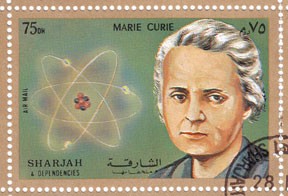The Year of Marie Curie

By Joe Giacobello
To honor the most famous female scientist in the world, France and Poland declared 2011 to be the Year of Marie Curie. A devoted wife, mother and two time Nobel Prize winner (physics, chemistry), Marie Curie was voted the "most inspirational woman in science" in a 2009 poll by New Scientist. Curie's pioneering research on radioactivity laid the groundwork for modern nuclear physics. What's more, she succeeded at a time when women faced great barriers, in both society and the workplace.
Magnetic Attraction
Born in 1867, Maria Sklodowska began her practical scientific training in Warsaw. At 24, she moved to Paris where she earned advanced degrees in physics and mathematics. In 1894, she met a Sorbonne instructor named Pierre Curie, and it was, quite literally, "magnetism" that drew the two together. Bonded by their mutual interest in the magnetic properties of various steels, the two married in 1895 and were inseparable thereafter.
Studying Uranium Radiation
In 1897, Marie needed subject matter for her Ph.D. thesis. Pierre suggested that she begin with Becquerel's latest observation — radioactive rays emitted from uranium. Using a sensitive device called an electrometer (invented by her husband 15 years earlier), Marie launched an intensive study of uranium radiations, and made some startling discoveries.
New Elements Discovered
Working with two uranium-rich ores — pitchblende and chalcolite — Curie found that the radiations from the ores were far more intense than those from the uranium itself. She concluded that unknown, highly radioactive elements must also be present. Pierre quickly put aside his own work on magnetism to help Marie with her research. In 1898, they weighed out a 100-gram sample of pitchblende and ground it down with a mortar and pestle. Soon after, they announced their discovery of two new elements: polonium and radium.
Radiation Exposure
During the next four years, the Curies would process a ton of the pitchblende, isolating a fraction of a gram of radium. Working in a leaky wooden shed, they ground the components, dissolved them in solvents, heated and stirred everything by hand — without the protection of a fume hood. Marie's death at age 67, caused by aplastic anemia, was likely a result of her years of exposure to radiation. A true inspiration to female scientists and women worldwide, Marie Curie lived a life of discovery and adventure, fueled by a "glowing" curiosity about the radiation phenomenon.
Classroom Discussion
- Discuss ways in which the discovery of radiation had an impact on the world, both positive and negative
- Marie Curie achieved a great number of things during her lifetime. Research and list 10 of her accomplishments

